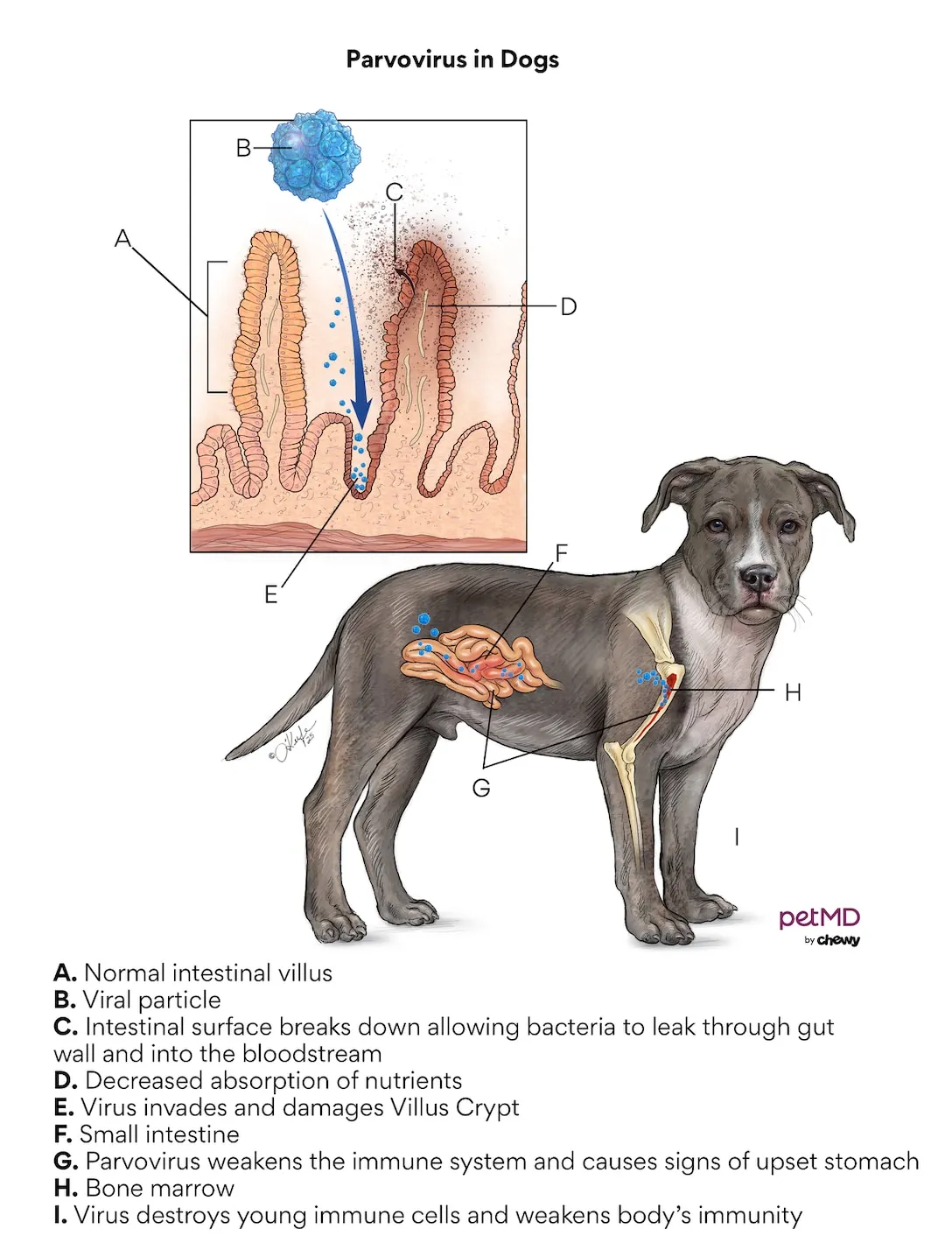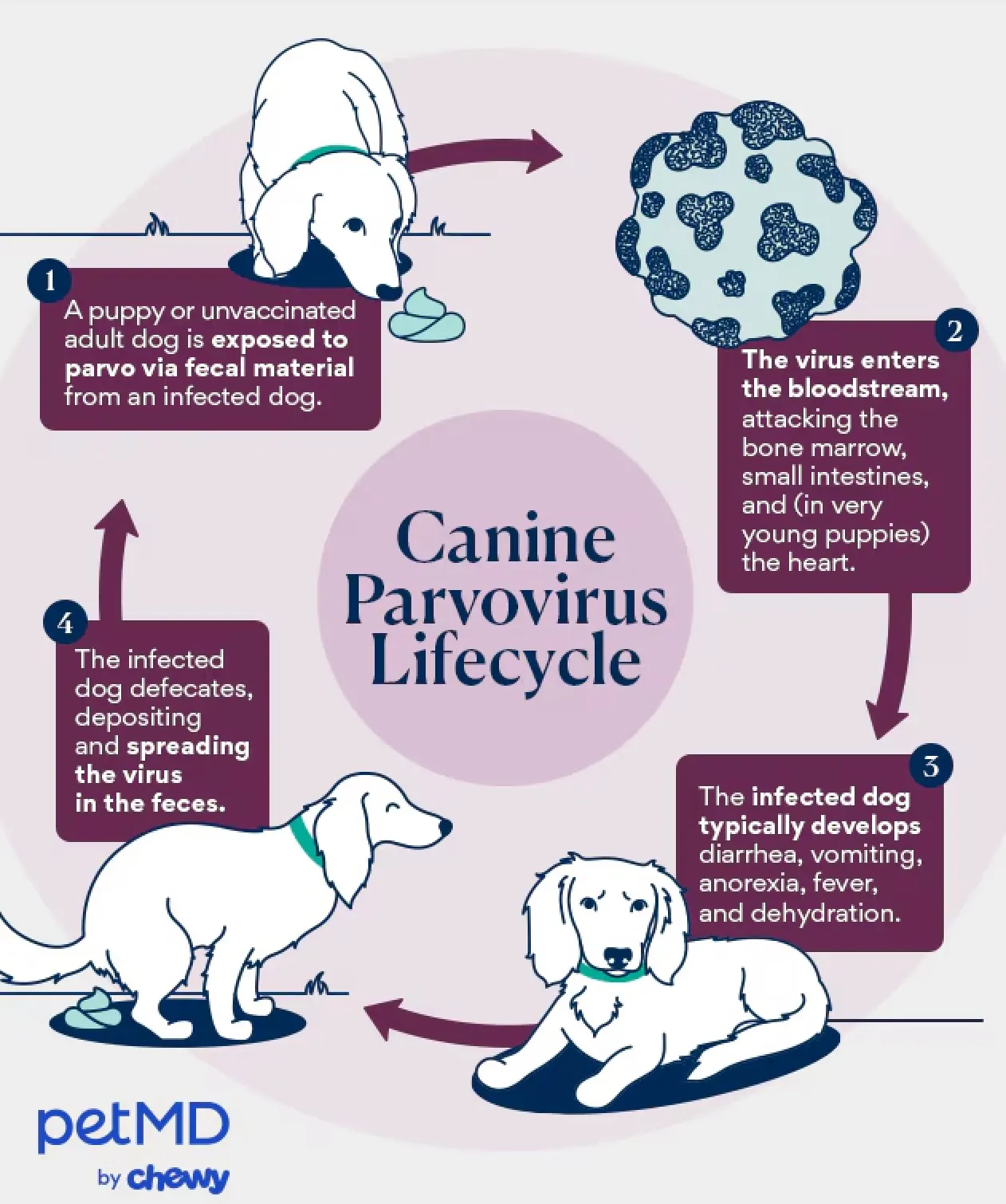Canine parvovirus, commonly known as parvo, is a highly contagious and often life-threatening viral disease affecting dogs, particularly puppies. Understanding the symptoms, transmission, and most importantly, the remedies and prevention strategies for parvo is crucial for every dog owner. While there’s no single cure, prompt and effective supportive care can significantly improve a dog’s chances of survival.
This article delves into the critical aspects of parvo in dogs, offering comprehensive guidance on what to do if your dog falls ill, how to protect your canine companions, and the essential remedies that form the backbone of parvo treatment. We aim to provide dog owners with the knowledge and confidence to navigate this serious health challenge.
What is Canine Parvovirus?
Canine parvovirus (CPV) is a highly infectious DNA virus that primarily targets rapidly dividing cells in a dog’s body. The most significantly affected areas are the intestinal lining and the bone marrow. In very young puppies, the virus can also damage heart muscle cells, leading to serious cardiac issues. While most commonly seen in puppies and unvaccinated adolescent dogs, adult and senior dogs can also contract parvo if their vaccination status is not up-to-date.
 A diagram illustrating the structure of canine parvovirus.
A diagram illustrating the structure of canine parvovirus.
Recognizing Parvo Symptoms in Dogs and Puppies
The onset of parvo symptoms typically occurs three to seven days after infection. Early signs can be subtle and easily mistaken for other common ailments. As the virus progresses, the symptoms become more severe and characteristic of parvo.
Early Signs:
- Lethargy and unusual tiredness
- Loss of appetite
- Fever
As the Virus Progresses:
- Severe vomiting
- Bloody diarrhea (often described as having a strong, foul odor)
- Abdominal pain and cramping
- Dehydration
Puppies infected with parvo may also exhibit:
- Collapse
- High heart rate
- Difficulty breathing
- Low white blood cell counts (leukopenia)
- Hypothermia (low body temperature)
- Hypoglycemia (low blood sugar)
How Parvovirus Spreads and How to Prevent It
Parvo is spread through direct or indirect contact with the feces of an infected dog. The virus is incredibly resilient and can survive in the environment—on surfaces like the ground, kennels, clothing, and even on a dog’s fur or paws—for months, and potentially years. This makes transmission a significant concern, as you don’t always need to see visible feces for the virus to be present.
Fortunately, parvo is a preventable disease, and vaccination is the most effective means of protection. A consistent vaccination schedule, starting from puppyhood and continuing with booster shots throughout a dog’s life, is essential.
Preventative measures include:
- Vaccination: Follow your veterinarian’s recommended vaccination schedule for puppies and adults.
- Hygiene: Wipe your dog’s paws after they come in from outside, especially if they have walked in areas where other dogs frequent.
- Avoidance: Keep your dog away from areas with suspected fecal contamination, such as dog parks, wooded areas, pet stores, and public places where other dogs may have been, especially if your dog is not fully vaccinated.
- Socialization: Carefully manage socialization for puppies, ensuring they only interact with other healthy, fully vaccinated dogs.
- Disinfection: Use disinfectants proven to kill the parvovirus, such as diluted bleach (1:30 ratio of bleach to water) or specialized veterinary disinfectants, to clean contaminated areas and objects.
 An illustration depicting the cycle of parvovirus transmission in dogs.
An illustration depicting the cycle of parvovirus transmission in dogs.
It’s important to note that the canine parvovirus is species-specific, meaning humans cannot contract it from dogs, nor can dogs contract it from humans. However, humans can act as carriers of the virus on their hands or clothing, thus spreading it to other dogs.
Diagnosing Parvovirus
Veterinarians typically diagnose parvovirus using a fecal SNAP ELISA test, also known as a parvo SNAP test. This quick test requires a fecal sample and provides results within minutes. However, it’s crucial to understand that a negative test result in a symptomatic dog doesn’t always rule out parvo, as the dog might not be shedding viral antigens at the time of the test. Additional diagnostic tests may be necessary in such cases.
The Stages of Parvo Infection
Understanding the progression of parvo helps in recognizing the severity and timing of the illness:
- Infection: The dog is exposed to the parvovirus, often through contact with contaminated feces, surfaces, or objects.
- Incubation: This period, typically lasting three to seven days, is when the virus multiplies within the dog’s body without visible symptoms. The virus initially targets the tonsils or lymph nodes before entering the bloodstream.
- Illness: Once in the bloodstream, the virus attacks rapidly dividing cells, primarily in the bone marrow and intestinal lining. This leads to a compromised immune system and severe gastrointestinal distress. The damaged intestinal lining prevents nutrient absorption, leads to fluid loss, and allows bacteria to enter the bloodstream, potentially causing sepsis.
Remedies for Parvo: Supportive Care is Key
There is no direct antiviral medication that cures canine parvovirus. Instead, Remedies For Parvo focus entirely on providing intensive supportive care to help the dog’s immune system fight off the infection. Prompt and aggressive veterinary intervention is critical for survival.
Essential Supportive Care Measures:
- Intravenous (IV) Fluids: This is the cornerstone of parvo treatment. IV fluids are essential to combat dehydration caused by severe vomiting and diarrhea, correct electrolyte imbalances, and maintain blood pressure.
- Anti-Vomiting Medications (Antiemetics): These medications help control vomiting, which reduces fluid and electrolyte loss and allows the dog to potentially keep down any nutrients or medications administered.
- Nutritional Support: Providing adequate nutrition is vital for gut healing. In many cases, a feeding tube (nasogastric or esophagostomy tube) may be necessary to deliver nutrients directly to the stomach or small intestine, bypassing the inflamed digestive tract.
- Electrolyte and Blood Glucose Correction: Veterinary professionals will monitor and correct any abnormalities in the dog’s blood chemistry, particularly low blood sugar (hypoglycemia) and electrolyte imbalances.
- Antibiotics: While parvo is a viral infection, secondary bacterial infections are common due to the compromised intestinal barrier. Antibiotics are often prescribed to prevent or treat these life-threatening complications.
- Pain Management: Parvo can cause significant abdominal pain. Appropriate pain relief is administered to ensure the dog’s comfort.
- Canine Parvo Monoclonal Antibody (CPMA) Therapy: In some cases, veterinarians may administer CPMA, which can help neutralize the virus and potentially shorten the duration of illness.
With dedicated and aggressive medical treatment, including hospitalization for intensive care, the survival rate for puppies with parvovirus can be as high as 85-95%. Survival chances are significantly lower if veterinary care is delayed or if adequate supportive treatment is not provided.
Cost of Parvo Treatment
The cost of treating parvovirus can be substantial due to the intensive nature of the care required. Treatment can range from several hundred dollars for outpatient management to several thousand dollars for severe cases requiring hospitalization, which can last from five to seven days or longer. On average, a parvo treatment can cost upwards of $5,000. This underscores the significant cost savings associated with preventative vaccinations, which typically cost between $30 and $50.
Recovery and Long-Term Management
The recovery period for a dog with parvovirus varies depending on the severity of the illness and the extent of damage to the gastrointestinal tract. Dogs typically remain sick for five to ten days after symptoms first appear. During recovery, it’s crucial to provide a bland, easily digestible diet to allow the intestines to heal. Veterinary-specific diets formulated for gastrointestinal support, such as those from Hill’s Prescription Diet, Purina, and Royal Canin, are highly recommended.
Frequently Asked Questions About Parvo
What are the first signs of parvo in a puppy?
The initial signs of parvo in puppies are often lethargy, decreased appetite, and fever. Vomiting and bloody diarrhea usually follow and can quickly lead to severe dehydration and shock.
At what age is a puppy safest from parvo?
While puppies are most vulnerable between 6 and 20 weeks of age, and unvaccinated or incompletely vaccinated dogs of any age are at risk, theoretically, puppies are never entirely safe from parvo until their vaccination series is complete and they have developed sufficient immunity.
Can I touch my puppy with parvo?
You cannot contract parvovirus from your dog. However, you can inadvertently spread the virus to other susceptible dogs if you have been in contact with an infected dog or contaminated environments. Always practice good hygiene and, if you suspect exposure, wash your hands thoroughly and change clothing before interacting with other dogs.
Will a puppy with parvo survive?
With prompt and aggressive veterinary care, including hospitalization and intensive supportive treatment, most puppies have a good chance of survival, often around 85-95%. Early detection and immediate veterinary attention are paramount.
References
- Chalifoux NV, Parker SE, Cosford KL. Prognostic indicators at presentation for canine parvoviral enteritis: 322 cases (2001‐2018). Journal of Veterinary Emergency and Critical Care. 2021;31(3):402-413.
- Horecka K, Porter S, Amirian ES, Jefferson E. A Decade of Treatment of Canine Parvovirus in an Animal Shelter: A Retrospective Study. Animals. 2020;10(6):939.
- Parvovirus: Transmission to treatment. Cornell University College of Veterinary Medicine.
